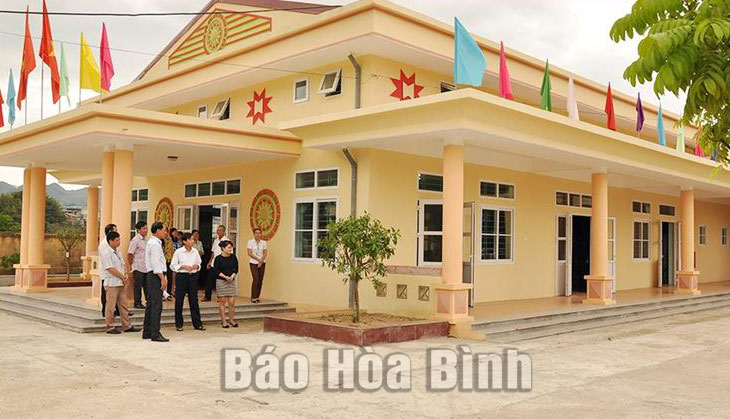
(HBO) – Hoa Binh city has regarded the national target programme on new-style rural area building as a comprehensive and long-term socio-economic development programme.Therefore, during the implementation, the locality has mobilised the involvement of the entire political system, and promoted the role of Party organisations, as well as the pioneering spirit of each official and Party member, and people’s mastery, to create consensus to complete the set targets.

The municipal People’s Committee has brought into play
different financial sources in infrastructure construction to accelerate
new-style rural area building.
The former Hoa Binh city completed the new-style
rural area building in 2018.’s Last year, under Resolution No. 830 of the
National Assembly Standing Committee, the new Hoa Binh city was formed by
merging the former city and Ky Son district.
The city now counts 19 administrative units, of
which seven are implementing the new rural area building programme.
The programme has been adjusted to make Hoa Binh
city that holds advantages and favourable natural and social conditions deserve
to be the centre of the province.
Hoang Van Minh, Deputy Secretary of the
municipal Party Committee, said the programme funding has been diversified and
integrated into other investments, including capital from the State budget,
businesses and organisations in and outside the city.
Up to five out of seven communes in Hoa Binh
city has won the new-style rural area status, with Yen Mong recognised as the
model new-style rural area, and Hop Thanh and Mong Hoa as advanced new-style
rural areas.
Notably, living standards of local residents
have been improved significantly, with per capita income reaching 66 million
VND last year and poverty rate dropping to 1.28 percent.
The city has also paid attention to
infrastructure in health care, education and transport, environment and
democracy.
To deserve the position of the provincial
economic and political centre, and implement its development plan by 2025, Hoa
Binh city will invest more in new rural area building, aiming to have all of
its communes recognised as new-style rural areas.
The Resolution adopted by the Congress of the
city Party Committee (2020-2025 tenure) stresses the leadership in building
model and advanced new-style rural areas.
Hoa Binh city is striving to win the title,
establish a new ward and become a second-tier city by 2025.
Hoa Binh province is undergoing a dynamic transformation amid Vietnam’s national digital transition. Building on Poliburo’s Resolution No. 57-NQ/TW on breakthroughs in science, technology, innovation, and national digital transformation, the province has rolled out a wide range of practical action plans. A standout initiative is the "Digital Literacy for All” movement, an effort to ensure that no one is left behind in the digital era.
Hoa Binh province is undergoing a dynamic transformation in the wake of the national digital transformation movement. Building on Resolution No. 57-NQ/TW of the Politburo on breakthroughs in science, technology, innovation, and national digital transformation, the province has implemented a wide range of practical action plans. A standout initiative is the "Digital Literacy for All” movement ambitious effort to ensure that no one is left behind in the digital age.
With a spirit of unity and proactive problem-solving, the Party Committee, the government and the people of Dong Lai Commune (Tan Lac District) have made great strides in implementing the resolutions of the 24th Party Congress of the commune for the 2020 - 2025 term. Focusing on leadership and practical actions, the commune has brought the Party’s resolutions into daily life, creating strong impacts and pushing the local development forward.
Amid the nationwide push for digital transformation, young people in Hoa Binh Province are stepping up as dynamic pioneers, applying technology to enhance Youth Union operations and expand the reach of youth-led initiatives. Through creativity and adaptability, Youth Union organizations at all levels have introduced a series of practical solutions, contributing to modern governance and community development.
In recent years, An Nghia commune, located in Lac Son district, has stepped up administrative reform, focusing on improving the quality and efficiency of its single-window service unit for receiving and processing administrative procedures. These improvements have helped create favourable conditions for local residents and organisations to handle administrative procedures, contributing to the commune’s broader socio-economic development.
The Prime Minister-approved master plan to develop the multi-use value of forests ecosystems through 2030, with a vision to 2050, aims to improve the management and sustainable use of forest resources, create jobs, increase incomes, and improve the living standards of ethnic minorities, people in mountainous and remote areas, forest workers and those living near forests.



